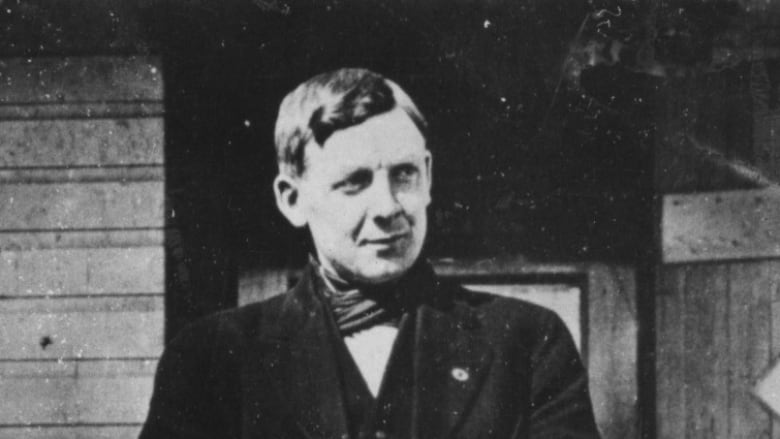I wanted to post this two weeks ago however circumstances paved other plans. Either way – it’s not a happy birthday wish nor a blurred celebration of a chaotic life review (if there is such a thing). Instead, I consider it a reminder of a martyr making moment saluting Ginger who died abruptly July 27, 1918.
Not by his choosing,
What does it take to become a martyr? In the case of 31-year-old Albert ‘Ginger Goodwin’ all it took was a single bullet. Canadians humbly assume we have a dull history. We often look south for tales of desperados, heroes and personality superstars. Ironically many of them are simply tucked away in our history books or stuffed in the corner of our museums.
Are we reluctant or embarrassed to remember those who created waves in our history making?
One such character which various levels of government in Canada would apparently rather us forget was Ginger.
He was just 31 when he died alone and scared on a mountainside on Vancouver Island. His death remains shrouded in mystery and irony 125 years after his murder most foul. A murder that many say was put into motion by corporate suits and pissed off politicians.
When Ginger died at such a young age he had already spent more than half of his trying to survive working in coal mines.
A Yorkshire man by birth, Ginger (something about his red hair) followed his father into the mines when he was 12, driving pit ponies that hauled carts of coal to the surface. Work conditions were incredibly dangerous in British coal mines and the harsh deprived lifestyle not much better. By age 19 Goodwin had crossed the ocean and found employment in Nova Scotia coal mines located near Glace Bay. Tragically work and living conditions in the promised land were just as horrendous as England. Poisonous gas, cave-ins explosions, black lung disease, typhoid fever… the list of challenges to survive went on and on – not to mention 10-hour days seven days a week. Workers complained about conditions, but nothing changed, and the miners lacked any leadership.
Less than six months after Ginger’s arrival disgruntled miners fought back and in 1909 a bitter strike took place lasting months. Goodwin spoke out about the horrific conditions and soon came a loud voice in support of unions. For his efforts Ginger was blacklisted and sent packing.
This time Goodwin shuffled his union rallying voice to the west coast of Vancouver Island. Once again, the work conditions at Cumberland mines were anything but safe. More than 219 miners had died in the company’s 90 years of operations including 60 miners back in a 1901 accident.
Spearheaded by young Goodwin demanding better work conditions Island workers walked off the job in 1912. Almost two years passed before strikers gave up the battle. Once again Goodwin was blacklisted and sent packing. Following a few cups of coffee at mines in the Interior, Goodwin eventually made his way to the smelter at Trail. There he met his demise.
For Ginger Goodwin it was the beginning of the end. Shortly after procuring work at the Trail mines Ginger began agitating coworkers inspired by disgusting work conditions and poor pay.
Intentional or not Goodwin had become an activist for coworkers. He proved to be a powerful speaker and inspirational leader. Ginger was elected secretary of the union, vice-president of the B.C. Federation of Labour, and president of the Trail Labour Council. During the tumultuous 1916 provincial election, Goodwin ran for MLA as a member of the Socialist Party banner. Goodwin came third, not high enough to get elected but certainly high enough to get negative attention from is employers at Consolidated Mining and Smelter.
The Canadian government instituted conscription in 1917 an unpopular decision designed to bolster the ranks of young men to help the Allied cause overseas. Conscientious objectors, pacifists those claiming religious exemption, and other options were used by some to avoid conflict. Goodwin, a pacifist and Socialist, who would refuse to fight anyone was assured of being safe, however, due to how frail and ill he now was. The man could no longer dribble a soccer ball down a hunk of grass and was not capable of running trenches.
Goodwin complied with the law and signed up but was not conscripted after the medical examination found he suffered “black lung” and bad teeth. His health was so poor he qualified as a category D ‘unacceptable for enlistment’ in the Army.
A very happy Ginger went back to rallying union workers at different locations including Consolidated Smelter and Mines at Trail and other company chains. Ironically just 11 days after spearheading yet another strike at CS &M Trail Goodwin was ordered to take the test again. He was now “fit for duty”. This time his health rating jumped to an A.
No one questioned the dramatic status change was a setup by the smelter company to get rid of Goodwin. Many suspected CS and M led by Selwyn Blaylock were responsible. Regardless Ginger Goodwin was not about to go to war and made it abundantly clear. Within a few days of the tests Ginger quietly snuck out of Trail and made his way back to friends on Vancouver Island.
Desperate for more fighting men and aggravated by union activists the provincial government stepped up the measures to track down draft dodgers. In Victoria the Dominion police force was organized and ordered to track down such cowards as Goodwin and his cohorts.
It was clear what happened next in the hills above Cumberland the only witness to what happened next was a disgraced former police officer named Dan Campbell a crack shot and skilled woodsman Campbell was hired as a posse to help track down Goodwin and so it was on July 27, 1918 that Campbell while hiking the trail on the lone Mountain found Goodwin and shot him dead.
I single shot through the throat silenced any further protests in the fiery redhead. Campbell later testified he fired in self defence, but Goodwin’s friends and coworkers never believed that story. Goodwin certainly would have surrendered his friends argued.
Tragically two justices of the peace officers ruled that no court case would be held to investigate Campbell’s claims or ascertain the facts of what happened.
When news of Ginger’s execution reached Union leaders on the west coast a one-day general strike, and 5,500 walked off the job. It became a day of violence when returning soldiers opposed to the strike argued and fought with union members and branded the strikers as traitors.
A week after Campbell’s arrest, he appeared before two justices of the peace. They decided there was enough evidence to justify a trial however in October, a grand jury heard the same evidence, and reached the opposite conclusion. There would be no trial. Campbell walked out of the courthouse on Victoria’s Bastion Square a free man.
And Ginger Goodwin became a symbol of workers’ struggles in British Columbia.
I only learned of Ginger while doing research for my book, Lost Souls of Lakewood – the History and Mystery of Blaylock’s Mansion. Goodwin wound up playing an intricate part in the historical fiction book. Perhaps that’s because he was, in truth, larger than life.








